Frozen Laptop Windows 10: Quick Fixes
A Frozen laptop on Windows 10 can be frustrating, especially when you need to do work or other important activities. It can occur for various reasons, from corrupted system files to hardware issues.
When my frozen laptop screen error appeared periodically without warning, I was ready to reinstall Windows completely. However, after researching the issues it’s easy to recover without going to such lengths.
Let’s take a closer look at why your frozen laptop on Windows 10 might be happening, and all the fixes that can get things running smoothly again.
Frozen Laptop Windows 10 Issues Explained
Here are some common factors that might cause a frozen laptop screen while in use or after entering sleep mode.
Corrupted System Files – Windows 10 makes use of many hidden system files that are vital to running the operating system. If these are deleted or become corrupted, freezing, and other errors can occur.
Malware and Viruses – Malware is often the culprit of many laptop problems, even if it’s not obvious an infection has taken place. The nasty code hides in the background, corrupting system files, targeting hardware drivers, and damaging the Windows Registry.
Insufficient System Resources – Running too many applications or having too many browser tabs open can exhaust system resources (CPU, RAM, etc). When the system runs out of resources, it may become unresponsive.
Outdated Drivers – Outdated or incompatible device drivers may lead to laptop freezing problems.
Windows Updates – Some users may experience freezing issues after installing certain Windows updates. In such cases, there might be compatibility issues, or the update may have been interrupted causing system file damage.
Hardware and Overheating –Faulty hardware components, such as a failing hard drive or problematic RAM, can cause freezing. An overlapping problem of overheating can also occur if your system is running beyond its limits, or the fans and other cooling systems are failing.
Power Settings – Incorrect power settings, such as the Windows power plan that doesn’t suit the laptop’s requirements, can cause freezing.
Software Bugs – In rare cases, a specific piece of software can contain leading the system to hang or freeze entirely.
How to quickly fix a frozen laptop on Windows 10
If you get a frozen laptop screen constantly, it’s recommended to troubleshoot the issue by addressing these potential causes. Follow these steps in order to solve the problem efficiently.
1. Scan for Malware
Before doing anything else a full system scan to remove any malware that might be contributing to your laptop freezing is important. Windows Virus & threat protection, combined with a reputable third-party antivirus will give the best chance of completing ridding viruses and malware.
2. Update Windows
Windows updates are important for closing security loopholes. Furthermore, if a failed Windows update is the cause of your frozen laptop, resuming the update or rechecking and installing the latest update properly can fix the problem immediately.
3. Check System Performance
It could be that your Windows 10 laptop is aging and can no longer handle all the programs ands tasks you want it to run. By checking the Task Manager, you can see where most of the RAM and CPU power is being consumed.
1. Right-click on the Windows Task Bar and select Task Manager.
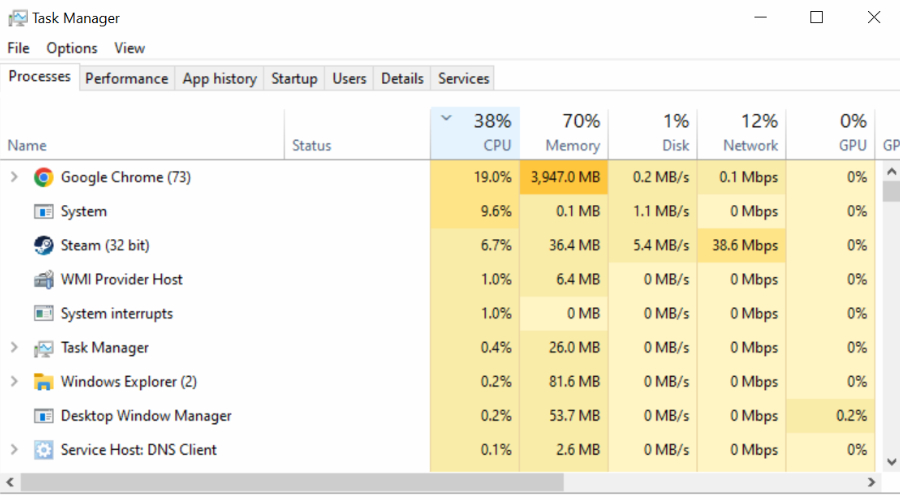
2. Click the CPU and Memory tabs to sort by the most resource-demanding programs and processes.
3. If certain programs and processes stand out, you might want to uninstall them. However, if they’re vital, you might also need to upgrade your hardware or laptop altogether.
4. Update Drivers
Windows can sometimes update drivers automatically, but it’s more fruitful to use the hardware manufacturer’s software tool to check for updates or download them from their official websites.
1. Type Device Manager into the start menu search bar and open the utility.
2. Drivers that are clearly in need of updating are shown with exclamation warnings.
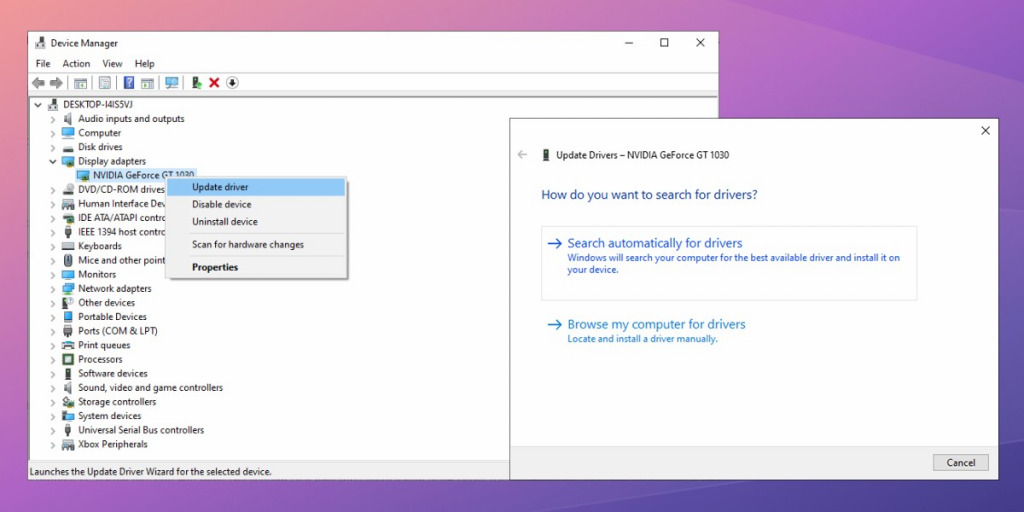
3. Right-click on these and any other driver you wish to update and choose Update Driver.
4. Locate the driver files you downloaded from the manufacturer websites to complete the process.
5. Check Physical Hardware
Power down your laptop and unplug it from its power source. If comfortable or even possible with your brand of laptop, unscrew the bottom and check that the components are properly seated, there is no dust build up or melting of components, and that the cooling systems are as they should be.
6. Run Windows Memory Diagnostic
Memory leaks and other problems can overwhelm the system and cause freezing. Windows has an in-built memory tool to check for memory issues.
1. Enter Windows Memory Diagnostic in the start menu search bar and open the tool.
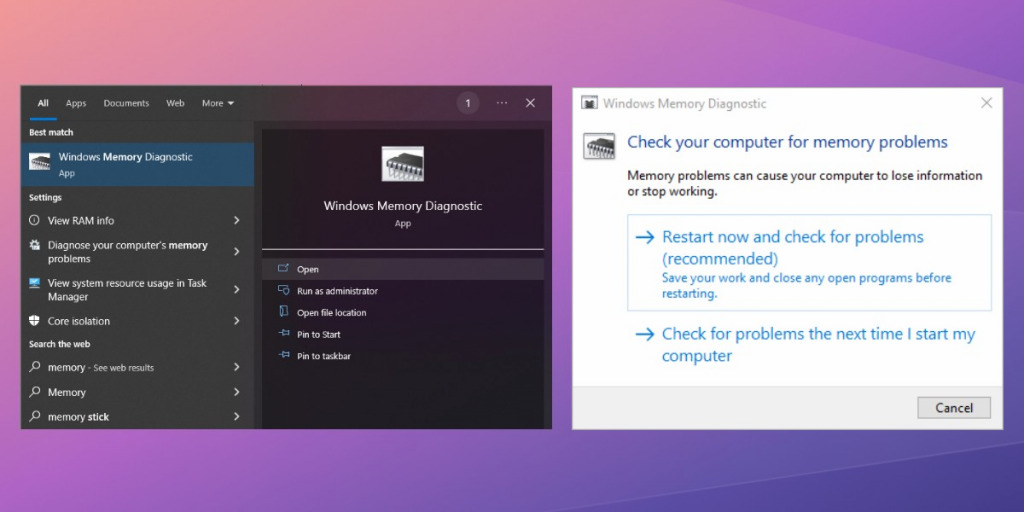
2. Click restart now and check for problems.
3. Wait for the scan to finish, restart, and show results
5. The worst-case scenario is that you must replace your laptop RAM.
7. Run Check Disk
Windows’ built-in check disk tool (CHKDSK) scans for hard drive problems which may be a contributor to freezing.
1. Type cmd in the start menu search bar and open the Command Prompt as administrator.
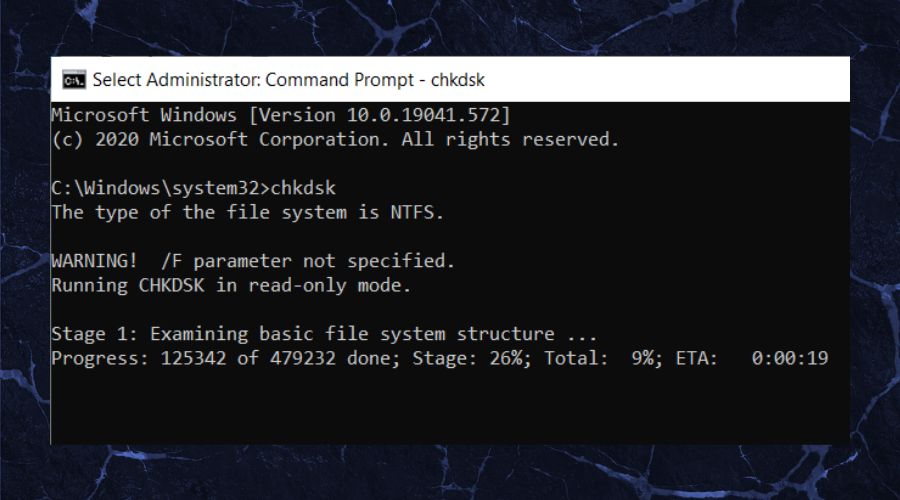
2. Type the chkdsk /f /r command. The /f command fixes errors it finds, and the /r command tells it to highlight any bad sectors that may require a hard drive replacement.
8. Check Windows Power Plan
1. Right-click on the Start button and select Power Options from the context menu.
2. The Power Options window will open. Look for the active power plan, which is typically highlighted. You’ll see options like Balanced, Power Saver, or High performance.
3. To view or change the settings of the selected power plan, click on the Change plan settings link next to the active plan.
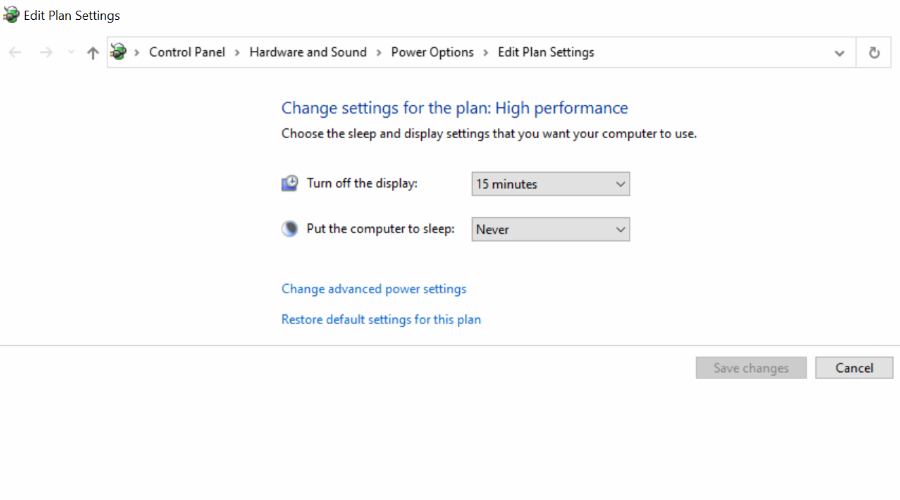
4. In the next window, you can adjust the advanced power settings by clicking on the Change advanced power settings link. This allows you to customize various aspects of the power plan, such as sleep settings, processor power management, and more.
5. To reset to the default setting, Type cmd in the start menu search bar and open the Command Prompt as administrator.

6. Type the following command, followed by Enter:
powercfg -restoredefaultschemes
9. Use Fortect
Windows repair tools like Fortect use similar tools as Windows built-in tools but with one user-friendly interface. It will replace any missing or corrupted system files and repair the Windows registry to solve laptop freezing. It also gives a hardware overview to check for overheating and unrecognized components.
1. Download and Install Fortect on your laptop.
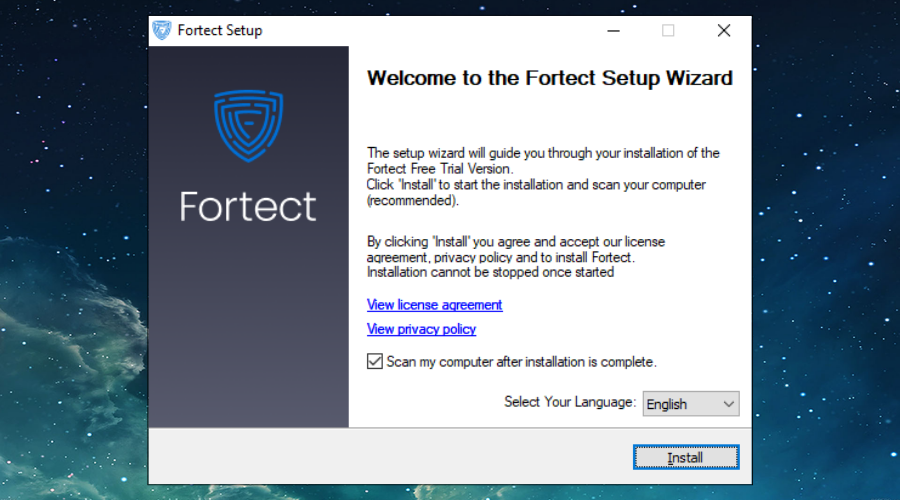
2. Launch the software and Start scanning.
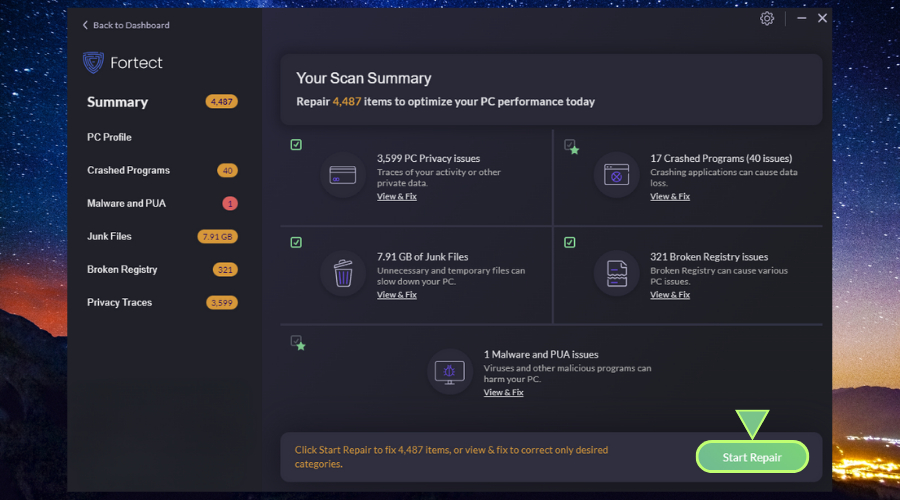
3. Click on Start Repair to automatically replace corrupted or missing system files and registry configurations.
Fortect also performs a full clean of temp and junk files your hard drive no longer needs, so your system isn’t working overtime and freezing up.
10. Run Windows SFC and DISM Tools
If your frozen laptop is caused by corruption to system files, you can always try Windows own tools by using these steps.
1. Type cmd into the start menu search bar and open the Command Prompt with administrator privileges.
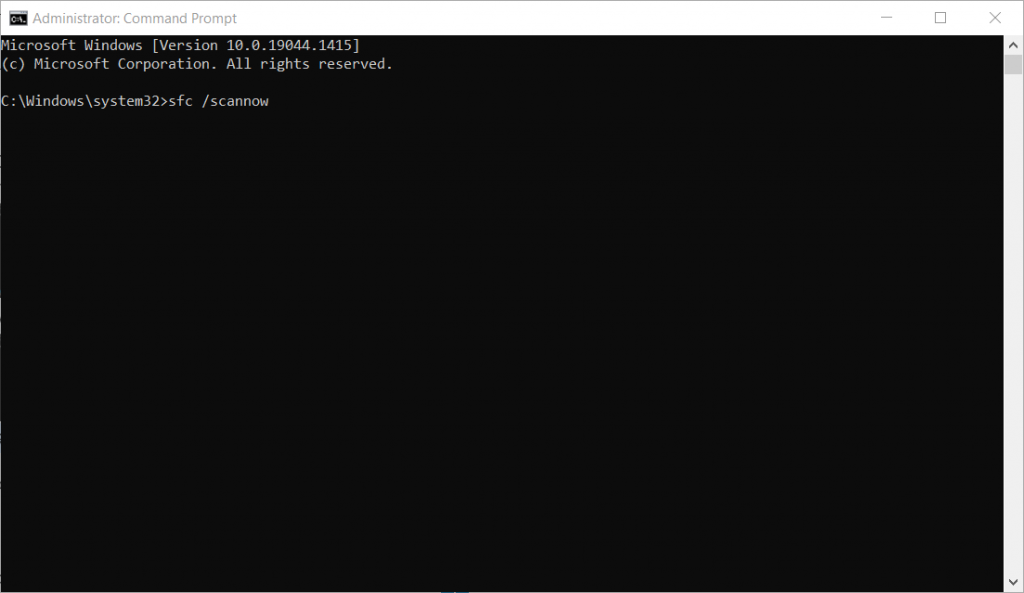
2. Enter sfc /scannow and press Enter to start scanning.
3. Upon completion, you will see one of the following messages: Windows Resource Protection found corrupt files and repaired them successfully or Windows Resource Protection did not find any integrity violations.
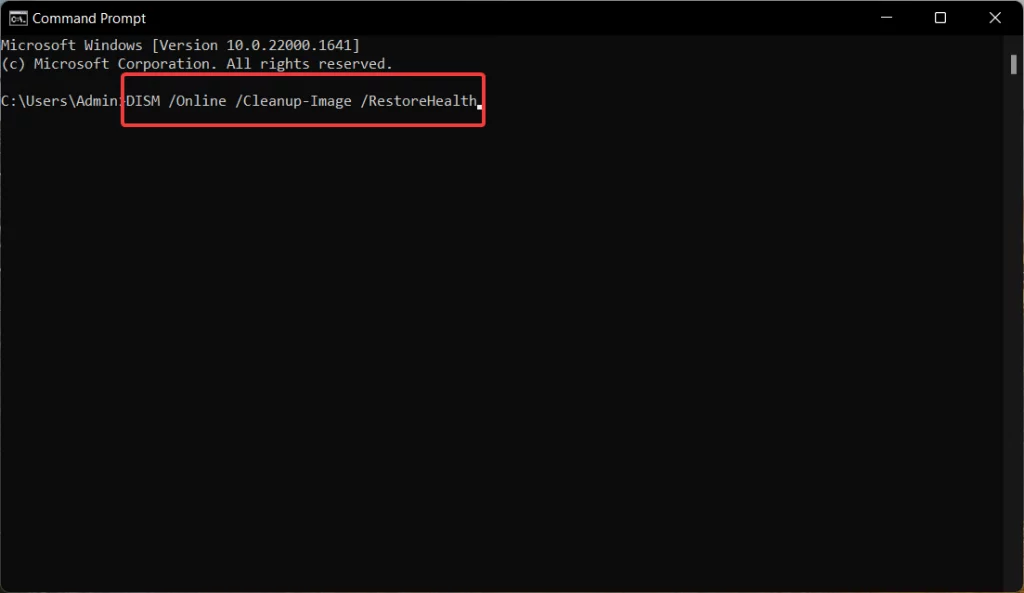
4. After a reboot, reopen the Command Prompt and type DISM /Online /Cleanup-Image /Restorehealth followed by Enter.
3. Wait for it to complete and your laptop will reboot.
11. System Restore
If your laptop is still freezing, using a restore point will try to rollback Windows to its previous condition before the issue. Note: You must already have a restore point schedule set for this to work.
1. Type restore in the start menu search bar and select Create a restore point from the results.
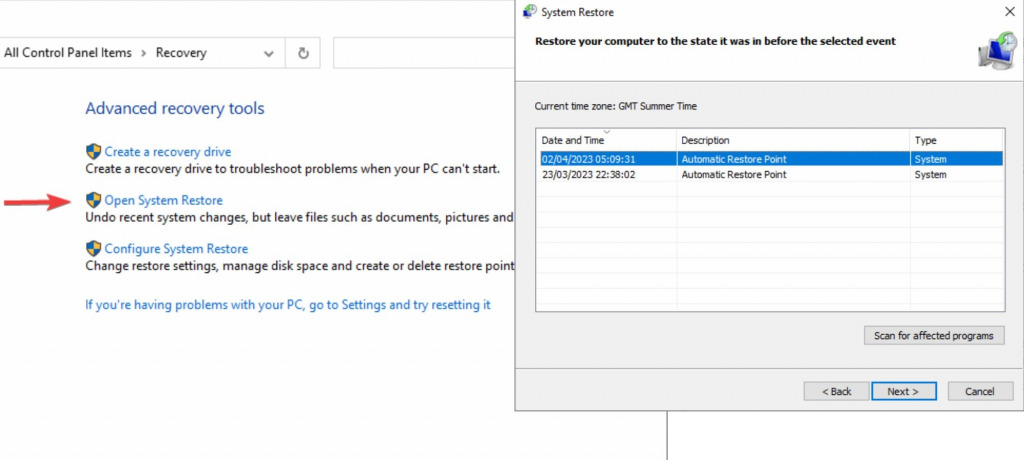
2. In the System Properties window, go to System Restore and click the Open System Restore.
3. Browse your restore points and select the restore point closest to the date of the freezing.
4. Click Finish and confirm the restoration. Your laptop will then restart.
The final word on fixing a frozen laptop on Windows 10
The good news is a frozen laptop isn’t the end of the world. While it can be a pin to replace hardware, most of the time the issue is really system file corruption and other issues within the operating system itself.
A comprehensive tool like Fortect fixed the problem quickly for me, but by doing the right checks and going through the above steps, you’re sure to bring your laptop back to life.




